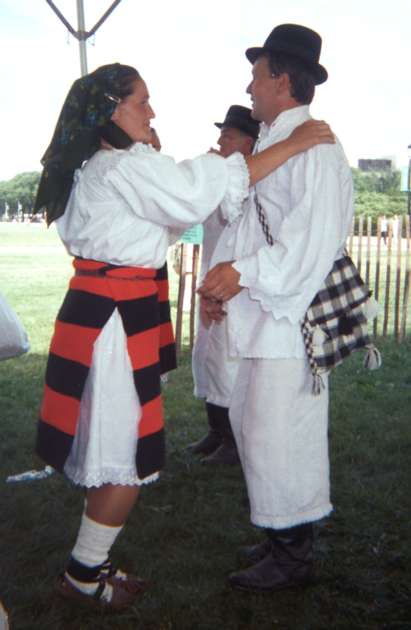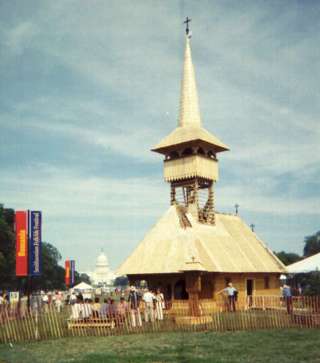 |
|
Research |
|
Vancouver - the beautiful city in which we live now
Maramures - the beautiful place where I was born I was born in Baia Mare, in the county of Maramures, which is one of the most
remarkable places you can visit in Romania. You've probably never heard
of it, so let me try to introduce it to you. One
of the things that characterizes Maramures is exquisite woodwork. A link
to a page which describes a bit of history, and some customs, etc.
is
here.
Unfortunately, the only picture
there is that of a wooden gate, with a bit of the steeple of a church seen
through. So if you want to see some pictures, you'd better go to the
Maramures
Gallery of John Rausch. This site has pictures from many of the Maramures
villages, and may start to give you an idea of what a unique place Maramures
is. By the way, be sure to look at the Calinesti pictures, since
that is the village where my paternal grandparents lived and where my father
was born. The river you see is the Cosau river in which I played as kid,
since my grandparents' house is very close to it. Also very beautiful are
the pictures from the new monastery in Barsana. In the first picture you
can see that although work is far from over, the wooden gate is already
erected. This is in accordance with one of the traditions which requires
the gate to be erected before anything else is started. The wooden churches
of Maramures are believed to be amongst the highest wood structures in
the world, and this is quite impressive given the fact that they're made without
using one single metal nail (or power tools, for that matter).
From those pictures you can also get a sense of what Maramures,
and more generally Transylvania looks like. There are beautiful green
hills, with lots of forests. The mountains protecting Maramures aren't
very high (2303m is the highest peak in Rodnei Mountains), but they
are very difficult to breach. Till this day there is only one train
track coming into Maramures, but there are several roads. I hope I'll
find a map of Maramures somewhere, and show it to you.
Well, luckily enough, I found some more Maramures pictures. It
turns out that this year (1999), Romania was one of the guest
countries for the Smithsonian
Folklife Festival . The Romanian coordinator was Augustin Buzura,
who is also from Maramures. He is a famous writer (and a graduate of
the Gheorghe Sincai high-school from Baia Mare, which I also
attended).
John Rausch was in Washington at the time and took some pictures,
of which I'm going to show two: the first shows traditional Maramures
dressing. The red and black (or yellow and black, depends on the
village) stripes are characteristic of Maramures, as are the very wide
pants the men wear. If you're dress like that, virtually any Romanian
knows you're from Maramures. Such traditional clothes are still worn in
the Maramures villages, most especially on Sundays, for church.
The second picture is of the Maramures church erected on the Mall for
this Festival. You can see the United States Capitol in the
background. The church was made in Maramures and then dismantled and
shipped and rebuilt in Washington. After the Festival, it will be
taken to Chicago, to be used as a regular church by the Romanians
living in that area. When looking at it, remember that most of the
work is hand made (no power tools) and there are no metal nails
keeping the church together. The highest churches
in Maramures are over 50m tall, and have been standing for centuries. To be honest,
even the oldest ones are not quite that old, only a few hundred years.
They were built after the last Tartar invasion (to replace the ones burned at the time). |


